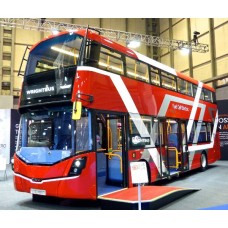Platinum in fuel cells provides zero-emissions
Platinum in fuel cells is providing ground breaking, zero-emissions public transport solutions
The iconic red London double-decker bus gets a platinum makeover this year when, in a world first, twenty such vehicles will service routes throughout the UK capital, powered by hydrogen fuel cells which have a platinum catalyst as a key component.
Crucially, these ground breaking buses produce zero emissions. They join a growing number of global initiatives across all modes of public transport that are demonstrating the vital role fuel cells can play in decarbonising transportation, especially as they offer the range and power output that batteries alone cannot offer. What is more, fuel cells do not necessitate lengthy recharging steps to 'refuel,' a further advantage.
According to the International Energy Agency, fuel cell electric buses are seeing significant growth, especially in China where thousands are expected to be in operation by the end of 2020. Meanwhile, Korea aims to deploy 1,000 fuel cell electric buses by 2022 on the way to achieving its stated target of 40,000 by 2040.
Japan is currently focusing its efforts on the 2020 Olympic Games, where it aims to use a fleet of 100 fuel cell electric buses. Rail operators are also turning to platinum-based hydrogen fuel cells as an alternative to diesel trains, particularly in parts of the network that are not subject to electrification.
The first-ever fuel cell electric passenger trains began service in Germany in 2018, with a further 41 due for deployment by the end of 2022. In the UK, where the government is committed to phasing out diesel trains by 2040, the first fuel cell trains are planned for 2022.
Elsewhere, platinum-based fuel cell technology is being applied to ferries. In California, the San Francisco Bay area is due to commence trials of a hydrogen fuel cell passenger ferry soon.




